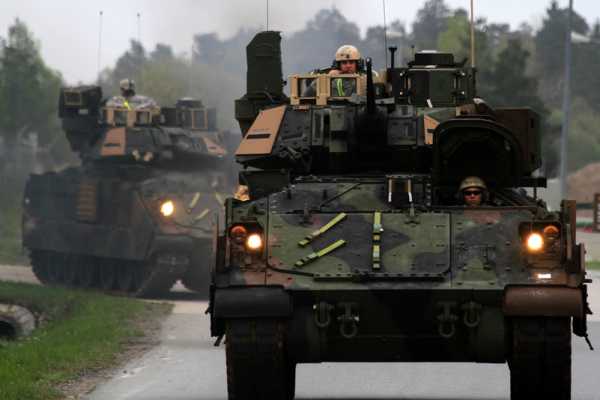
Joint procurement can be the starting point for true force integration (Photo: 7th Army Training Command)
Wars have often been catalysts for new European defence initiatives.
In 1950, the launch of the Korean War and the fear of a Soviet invasion of Western Europe led to the French-inspired project of a fully integrated European army.
After the Cold War, European states’ experience of the Western Balkans crises in Bosnia and Kosovo encouraged the birth of the EU common security and defence policy.
More recently, the 2014 illegal annexation of Crimea by Russia largely stimulated the process that led the European Commission of former president Jean-Claude Juncker to propose, in September 2016, the creation of a European Defence Fund (EDF), eventually adopted in 2021, aiming to finance defence research and development through the EU budget.
However, Article 41.2 of the EU treaty prohibits the use of the EU budget for defence expenditure; the EDF thus stops at the prototype stage, leaving the procurement phase to the sole responsibility of the member states.
Could the current Ukraine war turn a new page in European defence integration?
The EU defence white paper, the Strategic Compass, adopted on 24 March calls for a “quantum leap forward”. If the EU is not bold and ambitious now, when will it be?
In the days following the Russian invasion, many national governments announced an increase in their defence budgets, starting with Germany.
This context represents a unique opportunity, as most member states will be purchasing new military equipment at the same time — in response to the same threat.
At the 10-11 March EU summit in Versailles, France, heads of state or government agreed not only to increase their defence investments but also to develop new incentives to stimulate joint procurement.
This is a crucial issue indeed. While the Russian army uses only one type of main battle tank, EU armies have 17 different models. This fragmentation increases production costs, undermines interoperability among European forces, and means division and weakness.
At a time when the EU is able to supply €1.5 billion of weapons to Ukraine, it is becoming ridiculous and anachronistic that it still refrains from financing weapons for its own member states.
In practice, the research and development components of the EDF should be complemented by an equivalent European Defence Acquisition Fund.
For example, defence acquisition projects would benefit from a 20 percent EU subsidy according to three eligibility criteria.
The first of these could be priority procurement: the project should correspond to a priority recognised by the EU or Nato in order to encourage member states to focus investments on key shortfalls.
The second criterion could be collaborative procurement: at least three member states should order the same equipment to promote interoperability among European forces and generate economies of scale.
And the last one would be European procurement: whenever possible, the equipment should be manufactured in Europe to promote the consolidation of a European defence technological and industrial base and the EU’s strategic autonomy.
The current Franco-Belgian partnership for the joint acquisition of military land vehicles demonstrates that joint procurement can generate multiple spillover effects, leading not only to joint training programmes and joint exercises, but also to joint doctrine development.
Ultimately, joint procurement can be the starting point for true force integration.
Going further, the EU should consider not only subsidising member states’ acquisitions but also acquiring its own military capabilities.
For example, the EU could finance the creation of joint European military bases (or Euro-Bases) and pre-position vehicles and stocks of equipment and ammunition there.
In central Europe, Euro-Bases would help strengthen the Union’s defence and facilitate the rapid deployment and readiness of troops to the east in the event of a crisis.
In other strategic regions, they could be used to signal European presence and solidarity. While the French and Italians already have a base in Djibouti, a Euro-Base there could be the anchor of an ambitious EU Indo-Pacific strategy.
EU treaty
The main legal obstacle to these projects lies in Article 41.2 of the EU treaty, which prevents using the EU budget for defence expenditure.
A first option would be to use the European Peace Facility (EPF), the mechanism being used to finance the military equipment sent to Ukraine. As the EPF is off-budget, Article 41.2 would be fully respected.
To secure defence investments in the longer term, however, it would be useful to be able to draw on the EU budget — for example, through the Next Generation EU recovery plan funds.
This could be done — without going through a cumbersome treaty revision process — by activating Article 42.2.
This article provides that member states may, through a decision by the European Council ratified by national parliaments, establish a “common defence”.
In this framework, it would be possible to specify the scope of Article 41.2 and explicitly authorise certain defence expenditures from the EU budget.
A decision by EU members to adopt a “common defence” would also send a very strong signal of cohesion and determination to Russia.
Russia’s invasion of Ukraine is the biggest blow to European security since the end of the Cold War. The EU’s response must be commensurate with this challenge.
Source: euobserver.com



